Related Research Articles

Elite is a space trading video game. It was written and developed by David Braben and Ian Bell and originally published by Acornsoft for the BBC Micro and Acorn Electron computers in September 1984. Elite's open-ended game model, and revolutionary 3D graphics led to it being ported to virtually every contemporary home computer system and earned it a place as a classic and a genre maker in gaming history. The game's title derives from one of the player's goals of raising their combat rating to the exalted heights of "Elite".
Christopher Sawyer is a Scottish video game designer and programmer. He is best known for creating Transport Tycoon, which has been considered "one of the most important simulation games ever made", and the bestseller RollerCoaster Tycoon series. He began his career in the early 1980s producing small games for Memotech, and developing DOS ports of many Amiga games. From 1994 to 2004 he produced a series of Tycoon games, which became hallmarks of the simulation genre. After a period away from the games industry in the late 2000s, Sawyer founded the mobile game studio 31X which has handled modern ports of his work. Wired has described Sawyer as "one of gaming's greatest enigmas" given his legendary contributions to the genre while maintaining little presence online, and rarely agreeing to give interviews.

David John Braben is a British video game developer and designer, founder and President of Frontier Developments, and co-creator of the Elite series of space trading video games, first published in 1984. He is also a co-founder of and works as a trustee for the Raspberry Pi Foundation, which in 2012 launched a low-cost computer for education.

RollerCoaster Tycoon 3 is a 2004 construction and management simulation video game. It is the third installment in the RollerCoaster Tycoon series, and was developed by Frontier Developments and published by Atari Interactive. RollerCoaster Tycoon 3 places players in charge of managing amusement parks; rides can be built or demolished, terrain and scenery can be adjusted, and prices can be controlled to keep visitors or "peeps" happy.
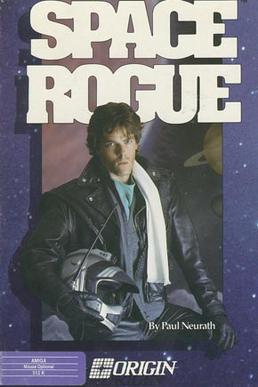
Space Rogue is a space flight simulation video game developed by Origin Systems and published by Origin Systems, Wave Brain, and Night Dive Studios. The game was released in 1989 for Apple II and Commodore 64; the series was later ported to DOS, Macintosh, Amiga, and Atari ST. The game was also released in the Japanese language for PC-9801, X68000, and FM Towns. The FM Towns version had its intro remade with slight animations and new illustrations, along with scrolling Japanese text, and exclusive CD quality background music. Taking place within the Far Arm of the Milky Way galaxy, Space Rogue's main story revolves around the player character's efforts to pursue a career and undertake long-range goals beyond his immediate mission.
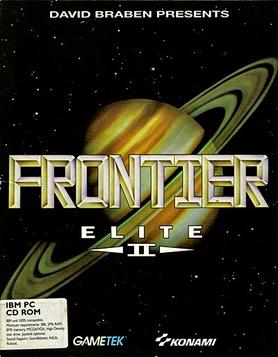
Frontier: Elite II is a space trading and combat simulator video game written by David Braben and published by GameTek and Konami in October 1993 and released on the Amiga, Atari ST and DOS. It is the first sequel to the seminal game Elite from 1984.
Combat flight simulators are vehicle simulation games, amateur flight simulation computer programs used to simulate military aircraft and their operations. These are distinct from dedicated flight simulators used for professional pilot and military flight training which consist of realistic physical recreations of the actual aircraft cockpit, often with a full-motion platform.

Elite Dangerous is an online space flight simulation game developed and published by Frontier Developments. The player commands a spaceship and explores a realistic 1:1 scale, open-world representation of the Milky Way galaxy, with the gameplay being open-ended. The game is the first in the series to attempt massively multiplayer gameplay, with players' actions affecting the narrative story of the game's persistent universe, while also retaining a single-player mode. Elite Dangerous is the fourth game in the Elite video game series. It is the sequel to Frontier: First Encounters, released in 1995.
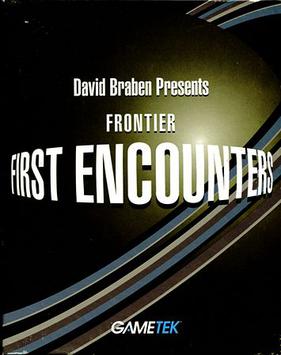
Frontier: First Encounters is a space trading and combat simulator video game developed by Frontier Developments and published by GameTek in 1995 for DOS. The player pilots a spaceship through a universe pursuing trading, combat and other missions.

Frontier Developments plc. is a British video game developer founded by David Braben in January 1994 and based at the Cambridge Science Park in Cambridge, England. Frontier develops amusement park management simulators Planet Coaster and Planet Zoo, and has produced several games in David Braben's Elite series, including Elite Dangerous. The company takes its name from the earliest titles in the Elite series with which it was involved, a port of Frontier: Elite II and development of Frontier: First Encounters. In 2013, the company was listed on the AIM segment of the London Stock Exchange. It published third-party games under the Frontier Foundry label between 2019 and 2022.

In computing, procedural generation is a method of creating data algorithmically as opposed to manually, typically through a combination of human-generated content and algorithms coupled with computer-generated randomness and processing power. In computer graphics, it is commonly used to create textures and 3D models. In video games, it is used to automatically create large amounts of content in a game. Depending on the implementation, advantages of procedural generation can include smaller file sizes, larger amounts of content, and randomness for less predictable gameplay. Procedural generation is a branch of media synthesis.
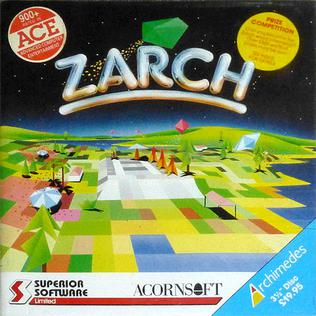
Zarch is a computer game developed by David Braben in 1987, for the release of the Acorn Archimedes computer. Zarch started off as a demo called Lander which was bundled with almost all releases of the Acorn Archimedes.
Ever since Pole Position in 1982, Formula One (F1) has always played a part of the racing genre in video games. Early Formula One games were typically arcade racing games, before Formula One Grand Prix (1991) popularized Formula One racing simulations on home computers.
A space flight simulation is a genre of flight simulator video games that lets players experience space flight to varying degrees of realism. Common mechanics include space exploration, space trade and space combat.

In video games, an open world is a virtual world in which the player can approach objectives freely, as opposed to a world with more linear and structured gameplay. Notable games in this category include The Legend of Zelda (1986), Grand Theft Auto V (2013) and Minecraft (2011).
The United Kingdom has the largest video game sector in Europe. By revenue, the UK had the second-largest video game market in Europe in 2022 after Germany, and the sixth-largest globally. By sales, it is Europe's largest market, having overtaken Germany in 2022. The UK video game market was worth £7.16 billion in 2021, a 2% increase over the previous year.
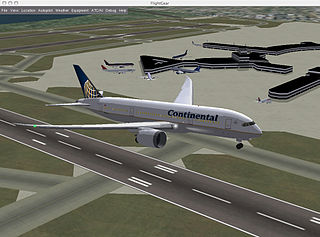
A flight simulation video game refers to the simulation of various aspects of flight or the flight environment for purposes other than flight training or aircraft development. A significant community of simulation enthusiasts is supported by several commercial software packages, as well as commercial and homebuilt hardware. Open-source software that is used by the aerospace industry like FlightGear, whose flight dynamics engine (JSBSim) is used in a 2015 NASA benchmark to judge new simulation code to space industry standards, is also available for private use. A popular type of flight simulators video games are combat flight simulators, which simulate combat air operations from the pilot and crew's point of view. Combat flight simulation titles are more numerous than civilian flight simulators due to variety of subject matter available and market demand.

Conqueror is a video game released as the follow-up to Zarch, using the same landscape engine. It is a third-person shooter with strategy elements in which the player controls a fleet of tanks. It was originally developed and released on the Acorn Archimedes by Superior Software in 1988 and ported to other home computers in 1990 by Rainbow Arts. The game was well received, particularly for its blend of strategy and arcade action.
Dragon's Lair is a video game franchise created by Rick Dyer. The series is notable for its Western animation-style graphics and complex decades-long history of being ported to many platforms. It has been adapted into television and comic book series.
References
- 1 2 Guinness World Records (Jun 18, 2015). "Elite: officially the longest-running space simulation series". Twitter (X). Archived from the original on Feb 28, 2024. Retrieved March 15, 2024.
- 1 2 3 Adam LaMosca (Jul 18, 2006). "Lost in the Void". Escapist Magazine. Archived from the original on Nov 10, 2023.
- 1 2 "Elite Dangerous for PC Reviews". Metacritic. Archived from the original on 16 March 2024. Retrieved 7 May 2015.
- 1 2 "Amiga Reviews: Frontier: Elite II". Amiga Reviews. Sep 27, 2019. Archived from the original on June 3, 2023.
- ↑ "Elite 25th Anniversary". Frontier Developments. Dec 27, 2007. Archived from the original on Jan 27, 2010.
- ↑ "Games that changed the world: Elite". CVG. August 14, 2002. Archived from the original on Feb 11, 2007.
- ↑ Matt Kim (Sep 10, 2023). "How Elite Influenced Starfield and 40 Years of Space Games". IGN. Archived from the original on Feb 7, 2024.
- ↑ "Elite Plus Manual" (PDF). Internet Archive. Microprose. April 17, 1991.
- ↑ Pfeifer, Robert. "alt.fan.elite FAQ". Archived from the original on 26 February 2009. Retrieved 4 August 2006.Section 3.18 and 3.19.
- ↑ "Frontier: Elite II official page". 2007. Archived from the original on 23 September 2010. Retrieved 2 July 2010.
- 1 2 "Elite FAQ Ian Bell Autumn 1999" . Retrieved 23 January 2015.
- 1 2 "Chris Sawyer (Transport Tycoon/RollerCoaster Tycoon) - Interview". Arcade Attack. 9 August 2018. Archived from the original on Dec 2, 2023.
- 1 2 "Elite series". mobygames.com. Archived from the original on Dec 9, 2022. Retrieved 23 January 2015.
- ↑ "Frontier: First Encounters – Official site". Archived from the original on 23 January 2015.
- 1 2 "The history of ... Elite", Retro Gamer (47), Imagine Publishing: 23–31, February 2008
- 1 2 "Frontier: First Encounters". MobyGames. December 4, 2023. Archived from the original on Feb 24, 2024. Retrieved April 5, 2024.
- ↑ "Frontier Reveals Elite 4: One of the greatest of all games makes a return". IGN . 8 March 2001. Archived from the original on 18 February 2002. Retrieved 14 September 2007.
- ↑ "Elite: Dangerous release date set for next month". PC Gamer. 7 November 2014. Retrieved 7 November 2014.
- ↑ "Elite: Dangerous – procedural generation". youtube.com. Archived from the original on 2021-12-12. Retrieved 20 December 2012.
- 1 2 3 "First use of procedural generation in a videogame". Guinness World Records. July 2, 2015. Archived from the original on October 6, 2023.